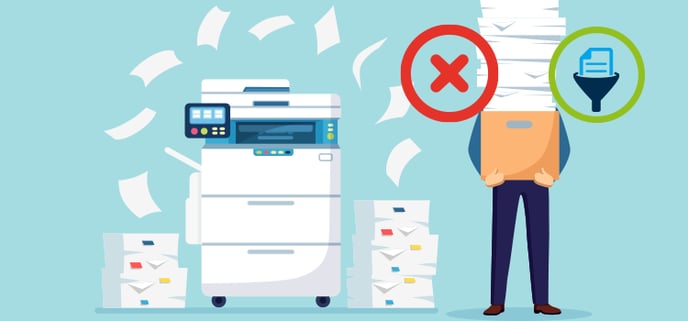
Whether it is to transfer a patient to another caregiver, send a consultation request, join with an insurance claim or CNESST file, your team regularly uses our patient record printing features. Here is a reminder of good practices related to file printing.
👏 Our team recently made changes to the way printings work in the back-end. You should see better performance and fewer print-related errors!
Define the record access authorization and the need behind the request
The patient record access request must only reveal what is relevant to the request. It is rarely necessary to print the entire patient record (except, of course, if the patient has a new family doctor who doesn’t use Omnimed, for example). However, we’ve seen that our clients often print the whole patient record. This practice causes a lot of activity on our servers, in addition to requiring the recipient or your team to sort the information that was printed.
You need to ask yourself: "Do I really need to print all of these notes?" and "Have I obtained the patient's consent, implied or expressed, to share this information?". There are various methods in Omnimed to filter the notes to be printed and thus generate only what is relevant to the request:
- Filter on the caregiver: It could be relevant, for an insurance case, for example, to select the notes of the patient’s family doctor, physiotherapist and psychologist, but ignore those of the other caregivers who made follow-ups unrelated to the insurance case. Since the filter by institution is not yet available in Omnimed, make sure to only select the caregivers who work in your clinic.
- Filter by subject or topic: This filter is very much appreciated when it is time to print or send information for insurance claims, CNESST or for a follow-up with a specialist. It is possible to add a clinical note tag to the note when writing it in order to identify the subject of the note. It makes it easier to filter the clinical notes list. The tag can be linked to the type of follow-up or the topic of the note (e.g., CNESST, mental health, diabetes, obstetrics, contraception, pain clinic, etc.)
- Filter by date: The information to be printed is often limited to an episode of care. Thus, in addition to the filters mentioned above, you can choose to print only notes written during a certain period of time (by choosing a start date and end date).
Among frequent requests, we often see the need to print the patient’s active medications list as well as the results list. The medications list can be printed by selecting the Medications summary box in the feature to print the patient’s record summary. The same procedure can be followed to print the results appearing in the summary. You can also filter the results to only print those relevant to your request.
For more information regarding our printing options, see the list of relevant articles at the bottom of this article.
Sending the notes
By printing the notes, you can send the file by mail or by traditional fax.
If you want, you can also save the print preview of the notes into a PDF file to send the PDF electronically (by email for example). Consult the CMPA recommendations regarding privacy and confidentiality.
Related articles
Print the list of clinical notes